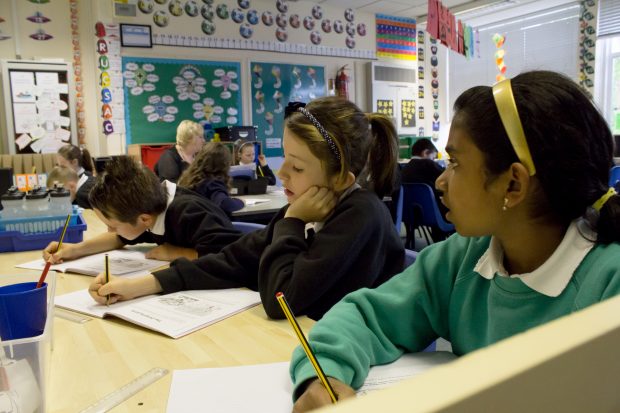Latest statistics: a first look at the EIF

First inspections under the #EIF and the trends we’re seeing so far
Today (16 Dec), we’ve published our first set of schools management information since the start of the education inspection framework (EIF) in September. I’m told there’s already been quite a bit of noise on social media anticipating what these statistics would show – understandably so. These are new inspections, so interest in the grade profile is natural.
Firstly, the proportion of all schools that have been judged good or outstanding at their most recent inspection remains at 86%, a positive picture. But those eagle-eyed enough to be keeping track of the reports we’ve published to date will have spotted a couple of other headlines.
The first is a slight dip in the proportion of schools getting good and outstanding judgements for overall effectiveness. Specifically, this was 80% in 2018/19, compared to 77% under EIF to date. This is based on just 840 full inspections and section 8 inspections of previously good and outstanding non-exempt schools, so we shouldn’t read too much into that. The grade profile tends to vary each year and this year is no different. It’s also early days and we could see the gap close over time.
This fall is mainly to do with the mix of schools inspected so far under the EIF. Since September, we’ve been into more schools previously judged to be less than good compared with last year. It’s therefore not surprising that the grade profile reflects that.
Schools in deprived areas
The second issue is the frequently – and hotly – debated link between schools in the most deprived areas and more negative overall effectiveness judgements.
Some will be disappointed to see that, so far, schools with more pupils from deprived backgrounds are still less likely to be judged good than those from more affluent backgrounds under the EIF, just as they were under the last framework. There’s currently no clear difference in the proportion of schools judged outstanding in deprived areas, but the overall numbers are small.
That’s not to say it’s all bad news – some of these schools are doing very well. Of the schools with pupils from the most deprived quintile that we have inspected to date under the EIF, 64% have been rated as good or outstanding, which is great to see.
As inspectors, we have to expect the same high standards for all pupils in all schools. But that’s not to say that we don’t take context into account when making judgements. For example, inspection outcomes show that schools with deprived intakes are more likely to be judged outstanding for the effectiveness of leadership and management than schools with less deprived intakes (the two most deprived quintiles compared to the two least deprived). So, our inspectors are often recognising the challenges that these schools face.
But, as nice as it would be, it’s unrealistic to think that a new inspection framework is suddenly going to result in a huge leap upwards in inspection grades for schools in disadvantaged areas.
As I’ve discussed before about the links between deprivation and inspection grades, schools in the poorest areas of the country face a steeper path to providing a good quality of education for their pupils. Aside from high numbers of pupils starting behind others, the recruitment and retention challenges facing all schools are even more acute in these places. When you’re getting fewer applicants for every job, it is just more likely that over time you will employ teachers with less experience or lower levels of subject qualification. And getting people to stay is tougher too.
These schools, sometimes in isolated places, also have more difficulty accessing high-quality resources, like great museums, libraries and theatres. So, some of these children are unfortunately not getting the education they deserve. Ofsted has to draw attention to that.

Recognising context, but also the need for great education for all
When it comes to an overall judgement, we have to report on the quality of education as we find it. If the quality of education in these schools is not good enough, not recognising this helps no one, particularly the children who go there.
Of course, we are not going to see an overnight improvement. That said, we hope that our new inspections go some way to galvanise change. We want children in every school to benefit from a broad, rich curriculum that prepares them for life beyond school.
We know that an overly narrow focus on test and exam results can lead to the curriculum taking second place to the race for ‘scores on the doors’ – as well as to schools making decisions that are not always in children’s best interests.
That’s why our shift in focus, away from mere numbers to how children are getting their exam results through the best curriculum possible, will make it easier for us to recognise the great things that schools – including those in areas of high disadvantage – are doing for pupils. The things that aren’t always reflected in published league tables.
Feedback so far
It’s early days, but so far feedback on our new inspections has generally been positive. Many of you have told us that there’s a noticeable shift away from discussing data and that inspection feels more like a professional conversation as opposed to something that’s done ‘to’ you.
Not everything on social media makes for pleasant reading – I am well aware of that – but it’s particularly good to hear how many of you have found the new approach supportive and helpful. Yes, we have to report on what it’s like to be a pupil at your school and on the quality of education being provided. But we absolutely want the process to be as constructive as possible.
Sean Harford HMI, National Director for Education, Ofsted











Responses